7 Balance Exercises a 60-Year-Old Yoga Instructor Does For Peak Mobility
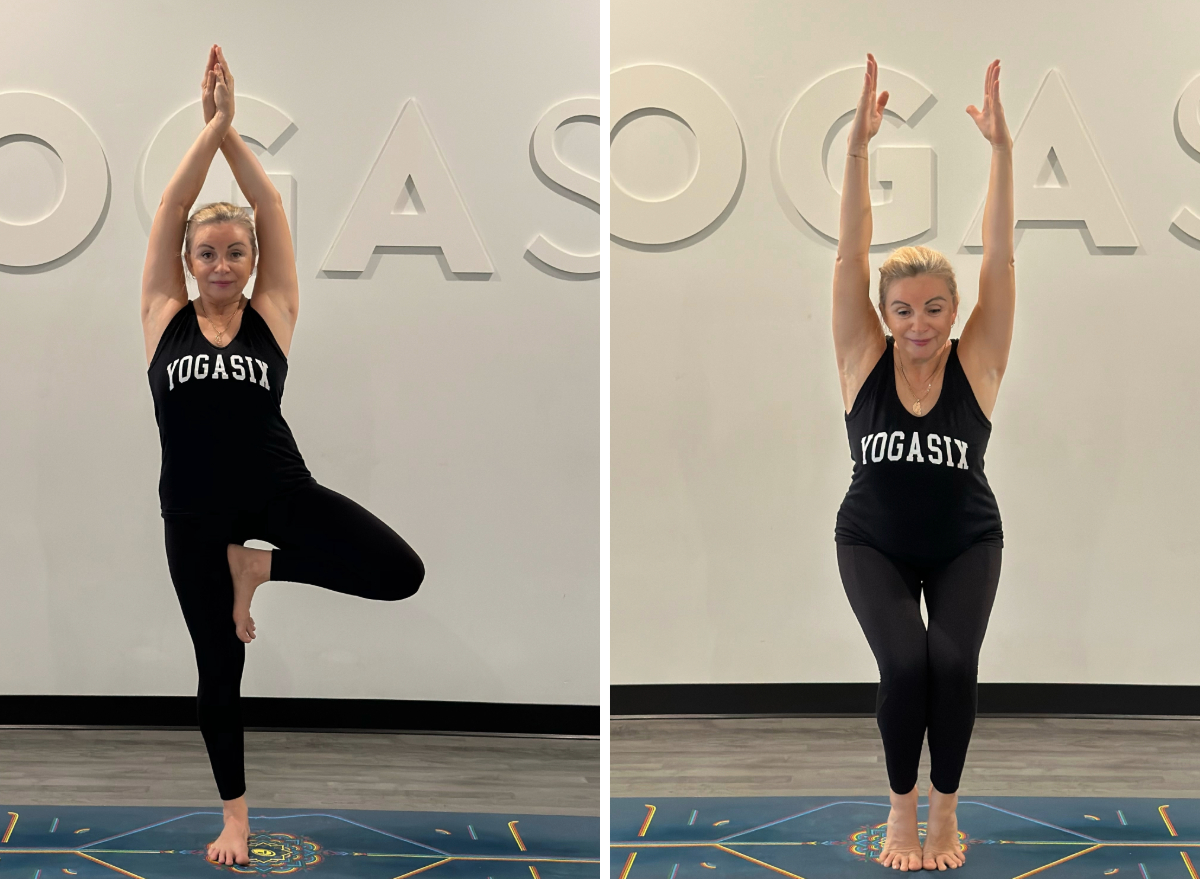
Balance is something you may not actively think about on a regular basis. However, working on maintaining and improving your balance and mobility should be a key part of your fitness routine—and for good reason. According to research published in the British Journal of Sports Medicine, being unable to balance on one leg for 10 seconds can almost double your risk of mortality. So if you're curious about ways you can boost your mobility, take a cue from 60-year-old Loreta Medoniene, E-RYT 200 and YogaSix instructor in Florida, who shares seven balance exercises she does to stay mobile.
Medoniene has practiced yoga for 25 years and has around 13 years of teaching under her belt. She always incorporates balancing poses in her teaching sequences and practices them herself. "Balancing is a fundamental skill since a very early age," Medoniene says. "Once we learned how to stand up on our feet and walk, most of our everyday activities require some amount of balance—we get out of our bed, get the pants and shoes on, then walk, run, climb stairs, get in and out of our cars—all of that by lifting one foot at a time and briefly balancing on the other. Maintaining balance is crucial for performing daily tasks and preventing injuries and falls. Especially as we age and our eyesight, hearing, and proprioception weaken."
Keep reading to learn all about the seven balance exercises Medoniene does for better mobility.
Tree Pose
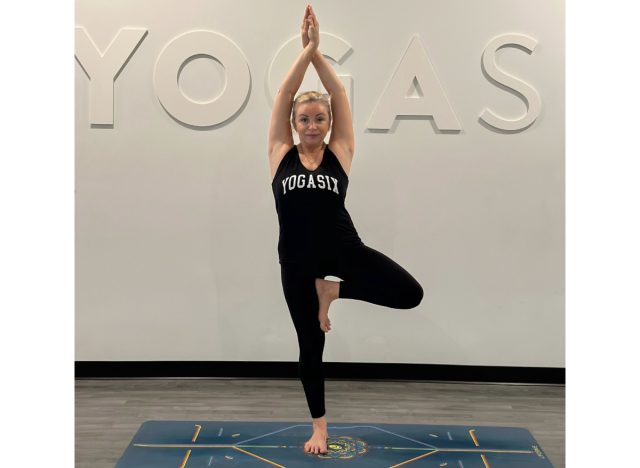
These balance exercises for better mobility begin with tree pose. Start by standing in mountain pose. Bring your hands to your heart's center. Shift your body weight to your left foot, breathe in, and lift your right knee up toward your belly button. Breathe out, and as you activate your hip flexors, open your right knee to your right side. Elongate your spine, and relax your shoulders, face, and neck as you hold this pose for five to eight breaths. Then, gradually reverse the motion to repeat on the opposite side.
"Although considered a beginner's pose, tree pose challenges everyone every time," Medoniene explains. "It teaches you to be present, humble, and resilient. [Tree pose] implores the qualities of grace, tolerance, and endurance. It strengthens ankles, knees, and legs, and strengthens and stretches the spine. Besides being a balancing pose, it is also a hip opener."
Eagle Pose
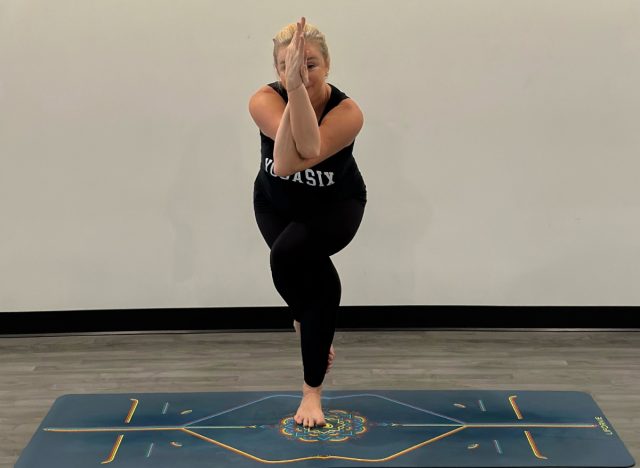
Once again, begin in mountain pose. Breathe in, and sweep both arms up to the ceiling. Breathe out as you circle them down, positioning your right arm under your left. Put your weight on your left foot, inhale, and raise your right knee to your belly button. Bend your left leg just a bit, and bring your right thigh over your left. Hold the pose for five to eight reps. Return to mountain pose, and repeat on the other side.
"[Eagle pose] invokes a sense of courage and freedom," says Medoniene. "[It] allows [you] to cultivate drishti, peripheral vision, just like the eagle's wide field of view. [This exercise] compresses and massages abdominal organs, and stretches outer hips and outer shoulders, as well as the whole back body. [It's a great choice] for beginners and advanced students."
Balancing Half Moon
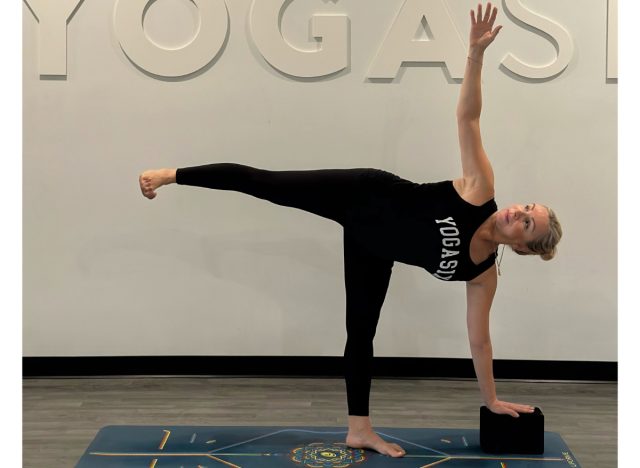
Begin in Warrior II pose on your right side. Breathe in as you transition your body weight to your right foot. Bring your right hand down to the floor, just about six inches diagonally outside your right foot. Place your hand on a yoga block or the ground, and raise your left leg until it's parallel to the floor. Hold this pose for at least a few breaths, then exhale, and move into Warrior II. Repeat on the other side.
"Balancing half moon is a] very expansive pose," states Medoniene. "[It's] a celebration of spaciousness and fullness of being; a beautiful reminder about [the] changing phases of [the] moon and life. [Balancing half moon also] strengthens [the] ankles, knees, legs, buttocks, abdomen, and spine [and] opens [the] chest, shoulders, and hips. This is an intermediate pose. Beginners can use the wall."
Twisted Balancing Half Moon
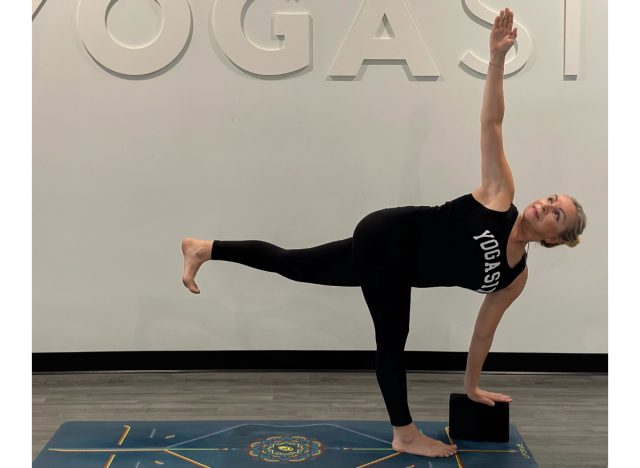
Start in mountain pose. Bring your weight to your right foot, breathe in, and bring your hands to your heart's center. Raise your left knee, breathe out, and start to hinge your torso forward as you lengthen your left leg so it's parallel to the ground. Place your hands on the ground or a yoga block. Make sure your hips stay square and your back leg is activated. With your left hand on the block, breathe in, and start to reach your right arm to the sky as your torso twists toward your right leg. Stay in this position for a few breaths. Then, shift your gaze down, lower your right hand, and bring both hands to your heart's center to slowly stand up tall. Repeat on the other side.
"[Twisted balancing half moon] allows you to release stuck energy, calms, and invigorates at the same time," Medoniene tells us. "[This pose] strengthens [the] ankles, knees, legs, buttocks, abdomen, and spine. [It also] improves flexibIlity and digestion. This is an intermediate pose. Beginners can use the wall."
Warrior III
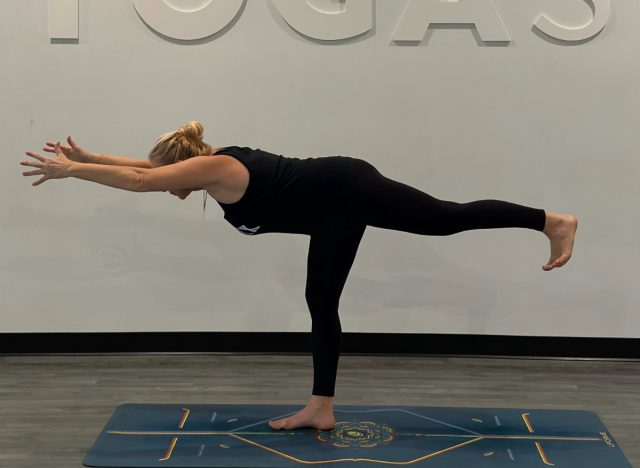
Next up on this roundup of balance exercises is Warrior III. Start in mountain pose. Bring both hands to your heart's center. Breathe in, and shift your weight to your right foot. Bring your left knee to your belly button. Breathe out as you gradually start to hinge forward and raise your left leg until it's parallel to the ground. Extend your arms, or place them on a yoga block for support. Keep your core engaged and your hips parallel to the floor as you hold the pose for a few breaths. Then, breathe in, bring your hands back to your heart's center, and lower your left leg beside your right. Repeat on the other side.
"This pose is a reminder about [the] brave heart of [a] yogi who is not afraid to step out of the comfort zone, to lean into the unknown, [and] to keep the heart open and mind calm even through the challenging times," says Medoniene. "[Warrior III] strengthens [the] ankles, knees, legs, arms, buttocks, abdomen, and spine [and] opens the chest. This is an intermediate pose."
Chair Pose on Tiptoes
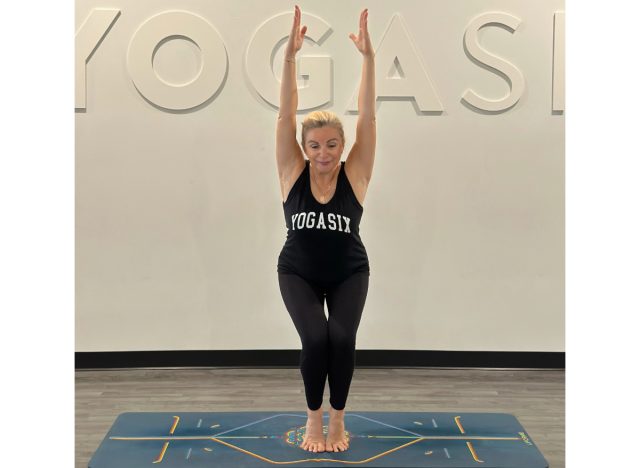
Begin in mountain pose. Breathe in, bend both knees, and raise your arms overhead. Exhale, and bring your hips down and back, as if you're about to sit on a chair. Put your weight on your toes, and lift your heels. Hold this pose for a few breaths. Then, bring your heels back down to the ground, straighten your legs, and lower your arms.
"[Chair pose] invokes [the] sensation of power and strength, at the same time providing the feeling of lightness," Medoniene explains. "Our core starts at our feet. By activating our feet, we activate our deepest core and pelvic floor muscles. The way our feet interact with the ground builds the foundation for all other joints and muscles in our body. This pose strengthens [the] inner arches, muscles, and joints in our feet, pelvic floor muscles, glutes, legs, and spine."
Boat Pose
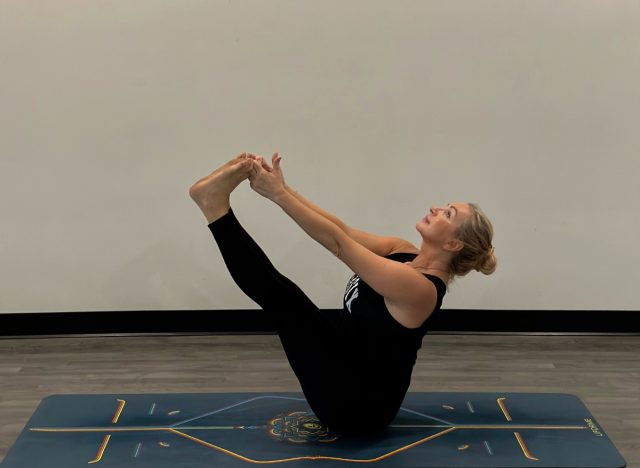
This list of balance exercises for better mobility wraps up with boat pose. Begin seated. Lean back, bend both knees, and lift your legs off the ground. Extend your legs straight toward the ceiling and extend your arms, or hug onto the back of your thighs with your hands. You can also place your hands beside your hips for added support. Take five to eight deep breaths in and out as you balance in this position.
"Every time boat pose offers us a mental test," says Medoniene. "[It] teaches us 'smooth sailing' through the challenging waters of life [and] invokes focus and body awareness. [Boat pose] strengthens [the] abdominal muscles, hip flexors, [and] adductors [and] strengthens and supports [the] lower back."









